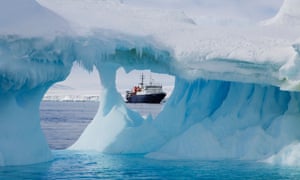Researchers hope to use bubbles trapped in ice to help predict effect of CO2 on the Earth’s climate
Million-year-old ice buried deep in Antarctica could hold crucial
information about the planet’s past and help climate predictions.
And scientists with the Australian Antarctic Division (AAD) are a step closer to unearthing it.
On Monday, they unveiled a drill designed to reach three kilometres below the surface of the frozen continent.
“What we’re embarking on over the next few years is to solve one of the last great problems in climate science,” glaciologist Tas van Ommen said.
The ice, believed to be up to 1.5m years old, is the target of several international research projects.
“We’ll see in the ice, tiny bubbles that are trapped between snowflakes in the ice as it gets buried,” van Ommen said. “These tiny bubbles are time capsules of past atmosphere.
“We want to get that ice, analyse those time capsules and understand
what [carbon dioxide] did in that period around one million years ago
when the climate was changing.”And scientists with the Australian Antarctic Division (AAD) are a step closer to unearthing it.
On Monday, they unveiled a drill designed to reach three kilometres below the surface of the frozen continent.
“What we’re embarking on over the next few years is to solve one of the last great problems in climate science,” glaciologist Tas van Ommen said.
The ice, believed to be up to 1.5m years old, is the target of several international research projects.
“We’ll see in the ice, tiny bubbles that are trapped between snowflakes in the ice as it gets buried,” van Ommen said. “These tiny bubbles are time capsules of past atmosphere.
About 1 million years ago the Earth shifted from a 40,000-year ice age cycle to a 100,000-year cycle, van Ommen said.
“[Carbon dioxide] is tied up in that change and it changes the rate at which ice ages have worked in the past,” he added.
“We need to understand if the CO2 we put in the atmosphere will have long-term consequences for the Earth in the future.”
The drill, made from stainless steel, aluminium bronze and titanium, is a mix of international and Australian technology and can withstand -55C.
But reaching the buried ice won’t be a quick, or easy, feat. Drilling is expected to begin in 2021 and take four years in total.
A mobile 500-tonne base will take equipment to the work site, 1,200km inland from Antarctica’s coast.
“We are sending men and women into the most remote extreme environment on earth,” AAD director, Kim Ellis, said. “It’s a really challenging adventure.”

No comments:
Post a Comment